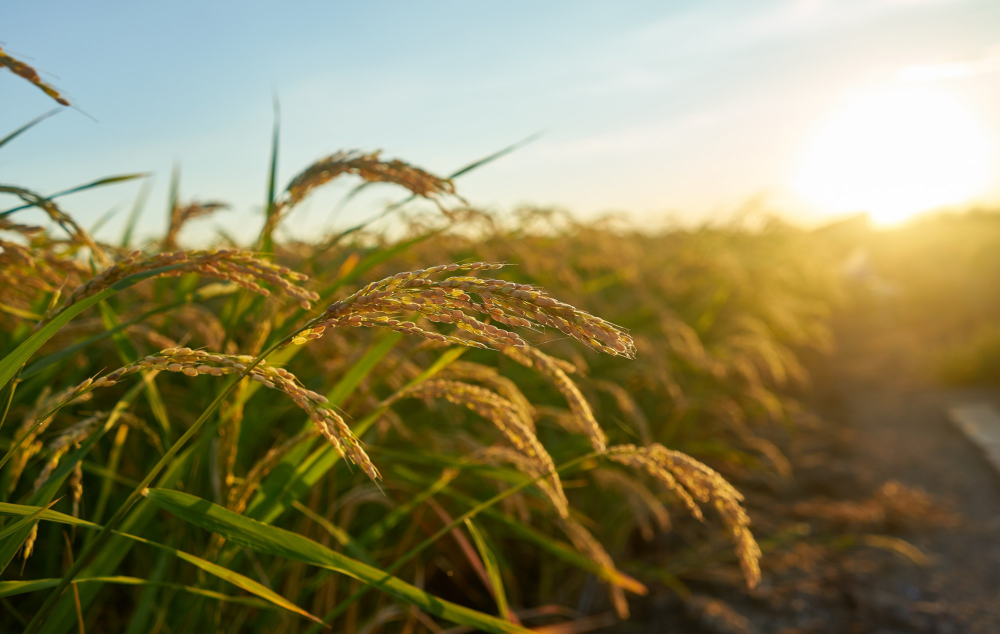Measuring the moisture content of rice

Thailand’s agriculture sector benefits from metrology-industry collaboration
The Challenge
Thailand is a major producer and exporter of rice on the global market, yielding 20 million tonnes of rice in the financial year 2022-23, a 2% increase over 2021-22 [1]. Moisture control in rice is crucial to the quality of the final product. Improper moisture levels at different stages in rice production can result in harvesting loss, spoilage of grain in storage, higher drying costs, loss of quality, and weight loss if sold too dry. Moisture metering is therefore very important for the inspection and quality control of rice production and trading.
However, the current verification methods for rice moisture meters involve time-consuming processes and the preparation of rice moisture samples requires specialist skills and methods that very few end users have.
The NIMT Solution
NIMT, the National Institute of Metrology, Thailand produces more than 100 certified reference materials (CRMs) for use by a wide range of industries. Known as Thailand Reference Materials (TRMs), they are produced to the highest standards, and with a well-defined traceability linkage to the relevant SI unit. Like all CRMs, they can be used to check the quality of measurements, to validate analytical measurement methods and to calibrate instruments.
Among the TRM library are samples of Thai ‘rice’ (without shell) and ‘paddy’ (with shell) that have known moisture content (10 – 18 % in both cases). Developed at NIMT, the traceability of these materials is established via the primary standard of mass and temperature and using metrologically valid procedures. These TRMs can be used as a faster and more accurate way to verify moisture meters, and thus, to determine the moisture content in ‘real’ samples of rice.
The same samples are used in inter-comparison exercises between designated organizations, stakeholders and NIMT. NIMT also provides several other CRMs for rice analysis, including elements in glutinous rice, arsenic in white rice flour, and organophosphate pesticides in rice flour.
The Impact
In Thailand, every 1 % of rice moisture content beyond the agreed limit (15 % MC) equates to a 1.5 % drop in the price per ton. Based on the economy’s most recent figures, that could mean a loss of about 120 million USD/year to the economy. Kett is one of the leading manufacturers of moisture meters for agriculture, and they are widely used in Thailand’s rice industry.
In collaboration with Kett and Thailand’s national quality infrastructure consortia, NIMT developed the first traceable certified reference material for the moisture content of rice and paddy. Its performance has been characterized and its value assigned via an inter-comparison within the economy. The resulting uncertainty is 0.2 % of moisture content. This means that the reference material can reliably and accurately validate rice moisture meters well within the target requirement (0.5 %).
Quote
“Working with NIMT has a positive impact on Thailand’s agricultural industry. We’re grateful to NIMT for their vision and their efforts to provide the best standard CRM that gives us confidence in the accuracy of moisture measurement in rice & paddy in Thailand.”
– Mr. Ratchapak Charoenthaipanich from NGEK SENG HUAT Ltd., Thailand distributor of Kett Electric Laboratory Co. Ltd.
References
[1] http://www.world-grain.com/ Global Agricultural Information Network report from the US Department of Agriculture Foreign Agricultural Service (FAS), 2022.
2017. Sinhaneti et.al. Quality Assurance of Rice and Paddy Moisture Measurements in Thailand, International Journal of Thermophysics 38(10), 2017.
ISO 7700-1, Checking the Performance of Moisture Meters in Use—Part 1: Moisture Meters for Cereals (2008)
ISO 712, Cereals and Cereal Products—Determination of Moisture Content, Reference Method (2009)

